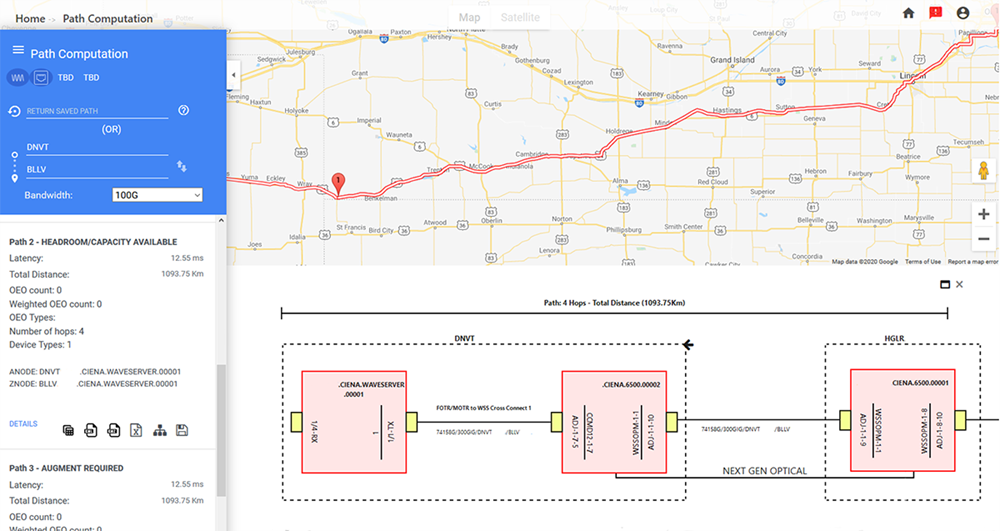How to automate service delivery in the age of 5G
What do networks and family trees have in common? It can be hard to trace your family tree, identify distant relatives and their relationships, especially when you add in different countries, marriages, divorces, languages, surnames and keep all of this up to date. The longest family tree in the world spans 80 generations and has two million members!
Network relationships and inventory are even more difficult to pin down because they are constantly in a state of change. Events can occur at any time that change the status of the network, impact the future topology of the network, and affect operations and business processes. This impacts effectively managing the network and keeping customers satisfied with the delivery of services.
Network inventory systems are famously not that accurate or in sync with reality on the ground and over time operators end up not really knowing what’s deployed in their networks and where. As networks grow and acquisitions happen, so too does the complexity and inaccuracy of inventory systems as a result of multiple inventories, domain-specific siloed inventories and diverse, non-standardized interfaces. On average, network operators maintain 16 separately managed network domains, on average (e.g. optical, Ethernet/IP platforms, different vendors using different NMS, etc.). (Heavy Reading survey 2019)
Why accurate network inventory and topology matters more today?
Inventory systems have evolved over the years to support auto-discovery of network assets, configuration management, managing physical, logical and virtual elements as well as tracking millions of assets. Increasingly with the need to automate and support on-demand service fulfillment and as-a-service business models based on dynamic resources, inventory systems are critical to efficient network operations. Half of operators believe that a unified, dynamic view of topology and inventory is critical to achieving their automation goals. (Heavy Reading survey 2019).
This has increased the urgency to federate inventory and integrate inventory with other systems such as trouble ticketing and alarm monitoring but it’s not easy to do with data quality issues and multiple non-standardized systems. While 90% of operators have attempted inventory and topology federation projects, less than a third actually succeed.
How CenturyLink handled inventory and automated provisioning challenges
CenturyLink, the second largest operator in the U.S. with customers in over 60 countries, was facing the enormous challenge of consolidating six networks and eight inventory systems as well as automating provisioning across all these new systems.
Initial attempts to automate provisioning resulted in an unacceptable fallout rate and for example periodically routing services over external (and expensive) networks when internal resources could have been used.
Calculating paths that span multiple networks can be complicated, especially when equipment in play is varied. Using manual processes for this work is inefficient and prone to inaccuracies and human error.
EXFO worked with CenturyLink to deploy Nova Context to create and maintain inventory federation, a cross-domain topology that dynamically links silo networks. Lower fallout rates and ‘right first time’ provisioning dramatically improved customer experience, as well as helped lay a solid foundation for the safe adoption of automation.
Path computation for optical transport

How Nova Context works in Centurylink automated service provisioning:
- Requests for a cross-domain service are made by users via GUI and by the orchestrator
via API - Nova Context calculates a set of optimal paths and determines the design necessary for implementation.
- Paths are communicated back to the orchestrator
- The orchestrator is then free to automatically create the service from the design
provided by Nova Context
A particular benefit of Nova Context is its ability to autonomously create this end-to-end model of the network and services. Once connectivity has been established to the source inventories and the semantic rules have been established to adapt Nova Context to the specific operator environment, the system builds and maintains the model automatically.
If new inventory data is added that Nova Context does not understand or have a rule for, it automatically flags it so that additional rules can be added. The entire process of getting a complete, federated end-to-end view of network and services can be completed in a few months, rather than years.
5G and optimizing mobile backhaul infrastructure
With new 5G services that need to be provisioned with extremely low network latency of less than 10, 5 or even 1 millisecond, mobile operators are working hard to prepare their fibre backhaul networks to support far more stringent service delivery and performance demands.
This will mean optimize existing fibre backhaul investments and determining where paths are performing well and where upgrades and investments are needed. Nova Context is well-designed to support 5G service provisioning by determining the latency on different paths and by calculating optimal network pathways according to customer-defined criteria (e.g. latency and equipment preference).
Read our paper Enabling inventory transformation and learn how Nova Context enhances federated inventory data with an end-to-end dynamic view of the network, services and customer dependencies that’s kept constantly up to date.
Find out more about Nova Context and the CenturyLink success story




